The arrival in Europe of the Ballets Russes led by impresario Sergei Diaghilev on the eve of the First World War, revived interest in the ballet and launched the modern era in performance dance. Ballets Russes is widely regarded as the most influential ballet company of the 20th century as well as an important promoter of creative expression throughout the art world. Diaghilev invited several contemporary fine artists to design sets and costumes in his theatrical productions. Studio painters, who were not trained in theater, but collaborated in productions included Alexandre Benois, Léon Bakst, Nicholas Roerich, Georges Braque, Boris Anisfeld, Natalia Goncharova, Mikhail Larionov, Pablo Picasso, Coco Chanel, Henri Matisse, André Derain, Joan Miró, Giorgio de Chirico, Salvador Dalí, Ivan Bilibin, Pavel Tchelitchev, Maurice Utrillo, and Georges Rouault. It was truly the ideal platform for the creation of ground-breaking artistic collaborations.
Ultimately, artistic stage productions and artistic costume designs were important to the artists too, who recognized the medium’s power to influence and attract audiences. How much more thrilling their work became when magnified on an ample stage! There is something about large scale objects that affects our visceral senses and emotions. The art designs on the costumes captivated audiences who were dazzled by the dancing, the striking designs, and the sheer size. Audiences have always relied on art to take them to places they have never been, whether real or imagined, and when it comes to larger than life artwork, our visual senses are compelled to linger longer and examine all angles in detail.
The maquettes of the great decorators glow like Persian miniatures on walls, and art connoisseurs are justified in prizing them highly. Today, the best way to appreciate the magnificent, massive art installations that Diaghilev’s commissioned artists created, is to browse through the few surviving souvenir programs or pickup a pre-1929 Leon Bakst edition, decorated with lithographs or pochoir plates. Bakst designed more productions than any other artist. These superbly produced publications, offer a rich panorama of the two decades of the Ballets Russes, and reflect the very highest standards featuring the leading lights of the company – Leon Bakst, Ida Rubinstein, and Vaslav Nijinsky, who also became Diaghilev’s lover.
Towards the end of World War I, in 1917, Picasso did the curtain design for the performance of Erik Satie’s “Parade.” The work is the largest of Picasso’s paintings and has been exhibited in the Centre Pompidou-Metz, Metz, France. His witty cubist costumes and set designs were also published in souvenir programs of “Parade.” His involvement with Sergei Diaghilev’s troupe, let to his marriage to Olga Khokhlova, a ballerina performing in “Parade.” During the same period, Picasso took the opportunity to make several drawings of the composer, Igor Stravinsky, in collaboration on “Pulcinella” in 1920.
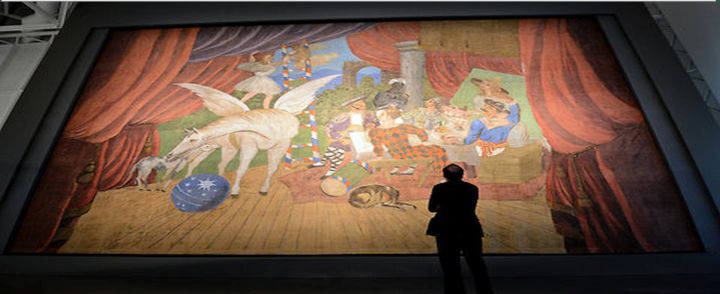
Picasso’s curtain designed for the ballet Parade (1917). Centre Pompidou-Metz, Metz, France, May 2012. Photo: Patrick Hertzog.
Ballets Russes challenged the conventional demarcations of masculinity and femininity of that time. The feminized ballet world, with its roots in the 19th century, was centered on the female body. It got turned upside down when beautiful, sexy men: Vaslav Nijinsky, Leonid Massine, Serge Lifar, Anton Dolin, Adolph Bolm made their first appearances with starring roles. Diaghilev, an acknowledged homosexual, as its leader; his lovers — Nijinsky, Massine, Lifar — as its stars; and the frank eroticism of so many of its works (“Scheherazade” was one big orgy; “Afternoon of a Faun” was a living wet dream of an amoral animal, who notoriously, masturbates into a nymph’s dropped shawl; “Games” was a tennis game disguising a ménage à trois ). At a time when homosexuality was a crime in London, the Ballets Russes was an oasis for gay men. Diaghilev died in 1929, from willfully untreated diabetes at age 57. Even though the driving force of the Ballets Russes between 1909 and 1929 was gone, the company’s influence lasts to the present day. The male body, its muscularity, strength and athleticism, became a persistent idea in modern ballet, while the costumes, paintings and backcloths fueled a tremendous force in modern art.
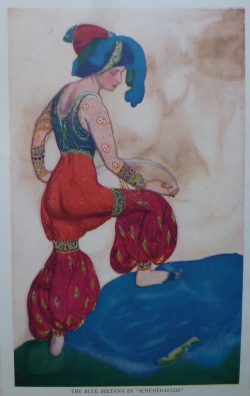
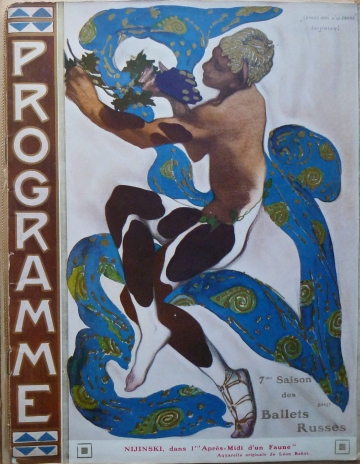
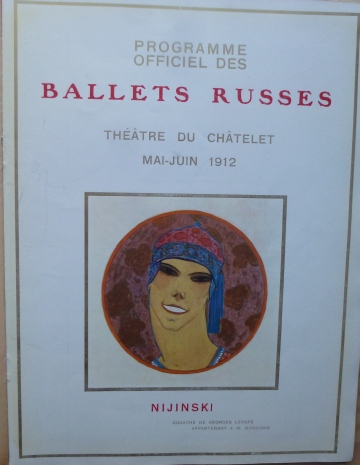
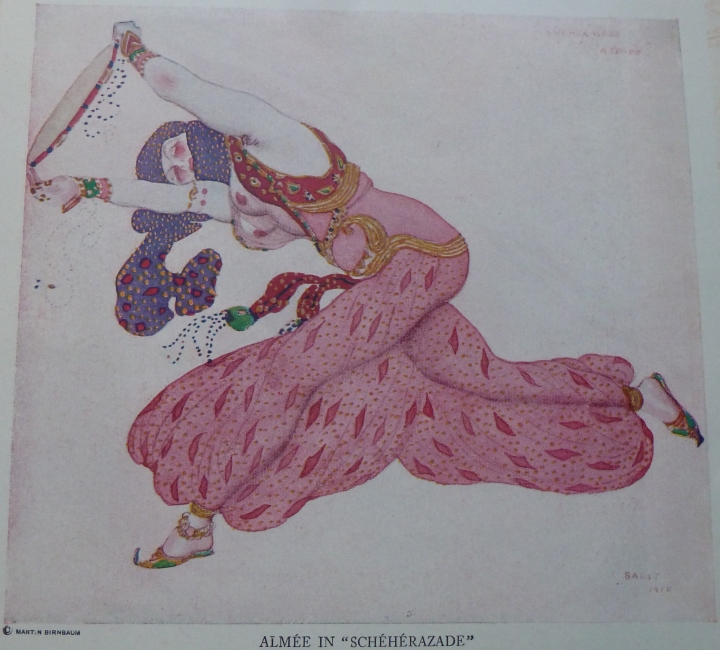
{ 0 comments… add one now }